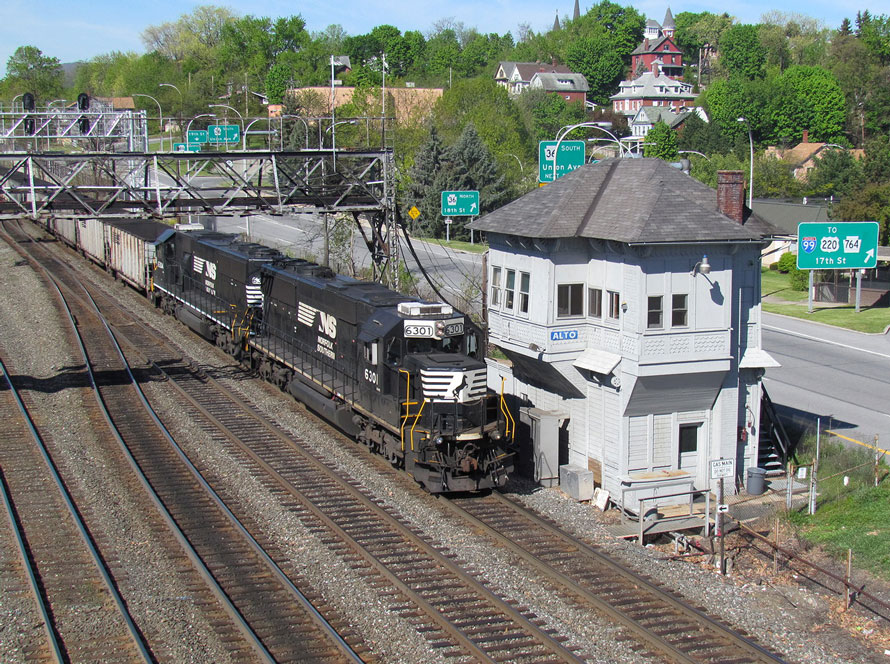
Built by the Pennsylvania Railroad in 1915, ALTO (JK) tower, in Altoona, Pennsylvania, remained in service for the next ninety-seven years, closing in 2012. Over that time it worked under the auspices of four different railroads, the Pennsylvania Railroad (PRR), Penn Central, Conrail and Norfolk Southern and each railroad, in turn, brought something new to the table. It is easy to think of railroad history over the last century to be one of subtraction; infrastructure being removed as a transportation monopoly yielded to competition from air travel and highways. However, for at least its ninety-seven years in service, ALTO’s story was one of adaptation to the ever changing times.
What did the PRR bring to ALTO? A simple answer is wealth. The PRR was something like the Google or Amazon of its day, a technological pioneer with the deep pockets to afford more than the basics. The wooden construction wasn’t a cost cutting measure, but actually a mark of the PRR’s dynamism, as up into the early years of the 20th century the railroad’s constant re-investment would render interlocking towers quickly obsolete, requiring frequent replacement. In fact the odd pop-out on the east side of the tower was added when the original interlocking machine proved to be insufficient and two more had to be installed in the 1930’s. On the front of the tower, the bay window was an optional extra that gave the tower staff an unobstructed view of the Main Line, reducing delays and operator error.
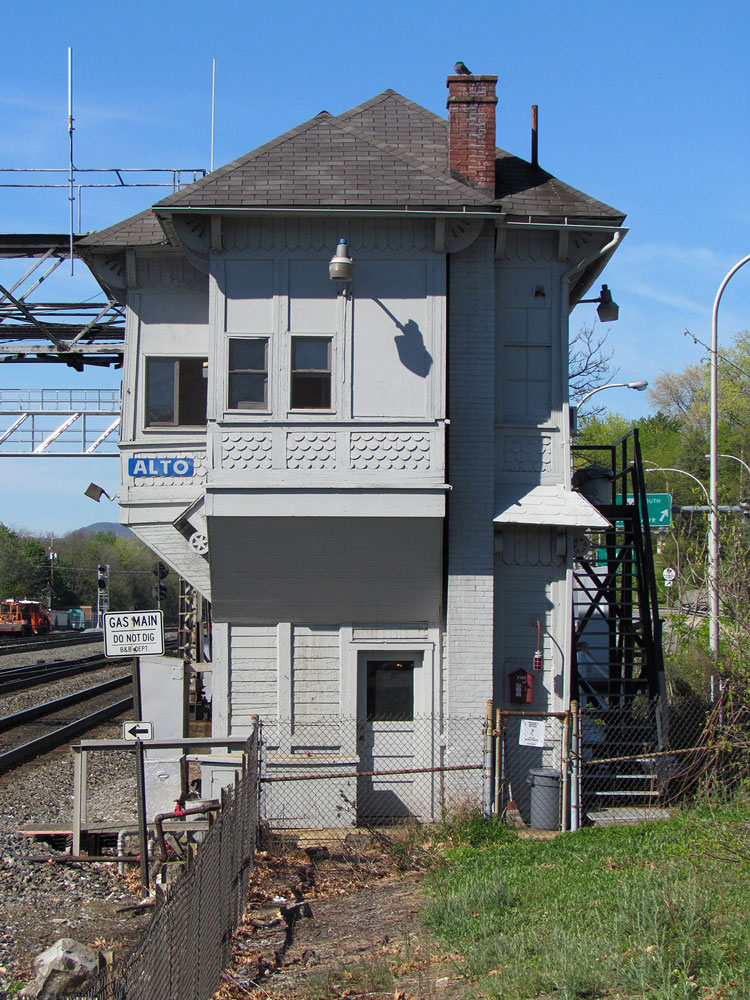
Although ALTO’s design had a degree of implied disposability, the PRR nevertheless spent money on architectural flourishes such as the fish-scale siding, the shade over the relay room windows and the wheel-like ornamentation.
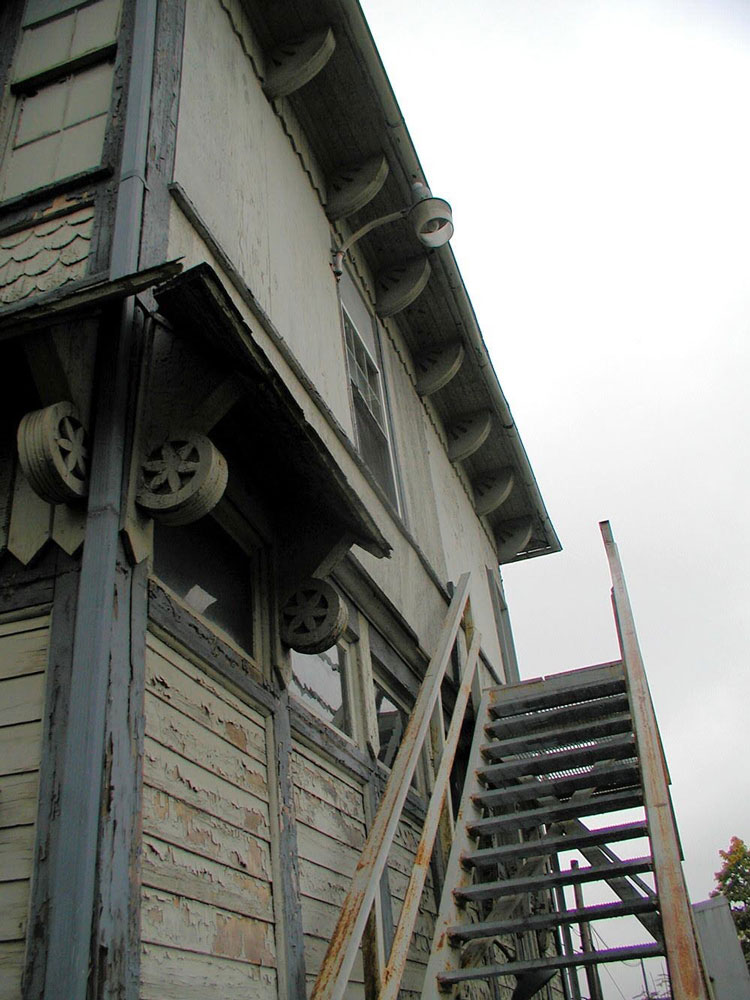
To control the train movements at the west end of the busy Altoona passenger station and the freight yard, the PRR invested in an early style of Union Switch & Signal Electro-Pneumatic interlocking machine with twenty-seven levers. In 1915 this type of machine was typically seen only in major urban junctions and station terminals like New York’s Penn Station, but the PRR had no compunction against installing a very expensive piece of technology in what might otherwise be a “temporary” interlocking tower given the railroad’s uniquely heavy traffic density. Still, the PRR was no spendthrift and had a penchant for building slow speed interlocking plants in busy terminal areas. Since trains were going to be making station stops, changing power or having helpers attached, little was lost in having all trains move through the interlocking at fifteen mph with the advantage of vastly simplified interlocking logic and compact dwarf signals.
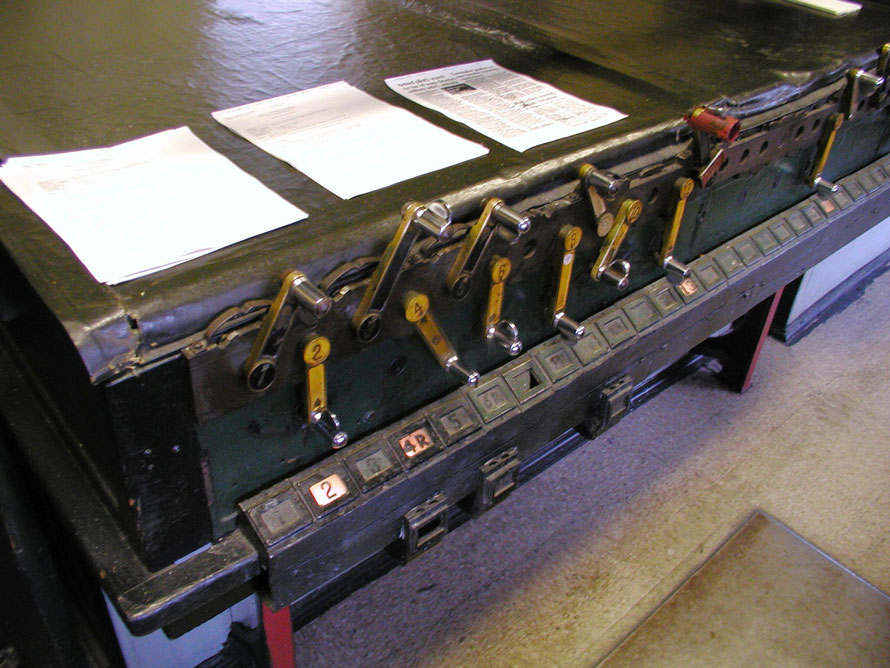
Although by 1915 most interlocking arrangements in North America made use of track circuits and other forms of non-mechanical logic, “armstrong” style lever frames with mechanically worked switches were still the norm as they reduced the number of highly expensive relays and could also be run on battery power. Situated in the PRR’s own company town, the road had no problems supplying ALTO with a full time source of electricity.
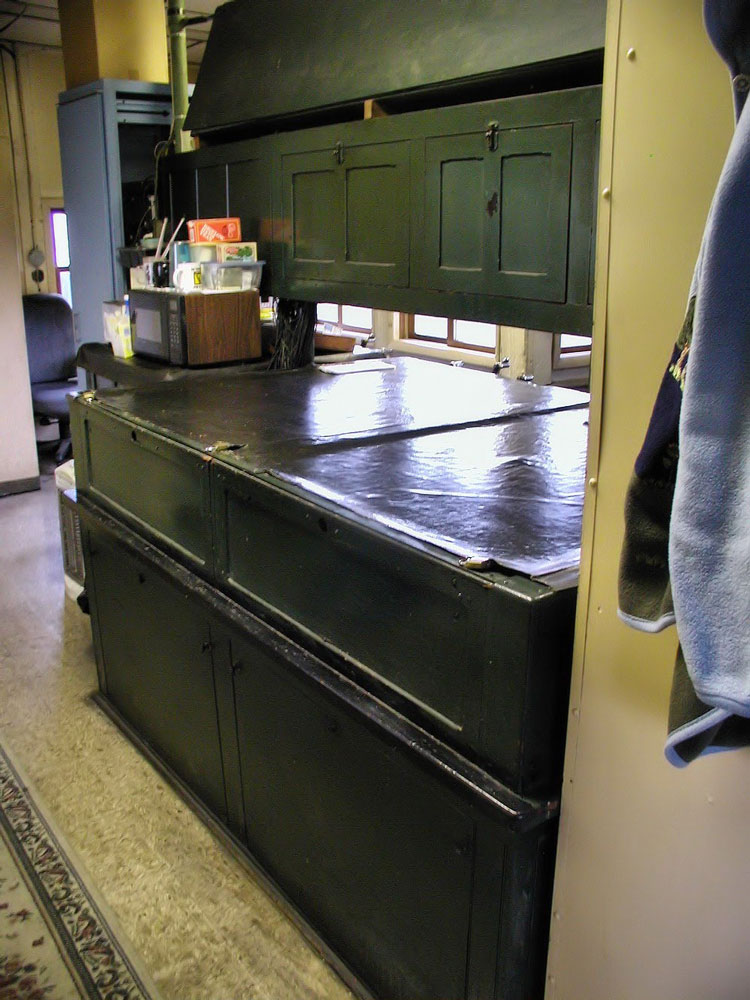
When built in 1915, ALTO, nee-JR, tower was fairly unremarkable as it was simply one of six towers located in about a two mile stretch in downtown Altoona. From the east, Main Line trains would pass WORKS tower at the Juniata Locomotive Shops while trains emerging through the yard would pass through SOUTH tower’s plant. The east end of the passenger station was controlled by 10th Street tower while the west end of the station was control by 14th Street. Directly abutting 14th Street’s territory was ALTO, where trains from both the yard and Main Line would be preliminarily sorted onto about six tracks moving towards SLOPE tower. SLOPE would preform final sorting into the final Main Line configuration of two single direction ABS tracks in each direction. In 1933 the eleven lever interlocking from 14th Street tower was transferred to ALTO with the twenty-three lever machine from 10th Street tower arriving in 1935 and creating the aforementioned bump-out on the east side of the tower. The new machines were re-numbered as part of a single unified interlocking plant with sixty-one levers.
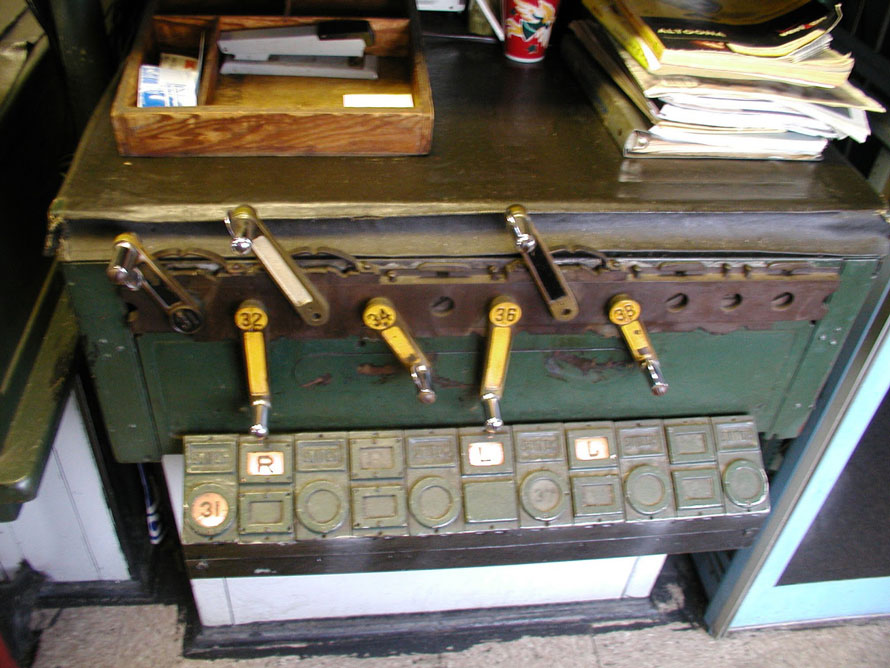
Another addition from the PRR was this steel lattice signal bridge (below). While many railroads would make do with cantilevers, bracket masts and dwarf signals, the PRR never shied away from spending on full signal bridges, even if they only mounted signals for a fraction of the tracks spanned. As ALTO was a slow speed plant, only the two westbound Main Line tracks needed “high” position light signals, which would at best display “approach slow.”
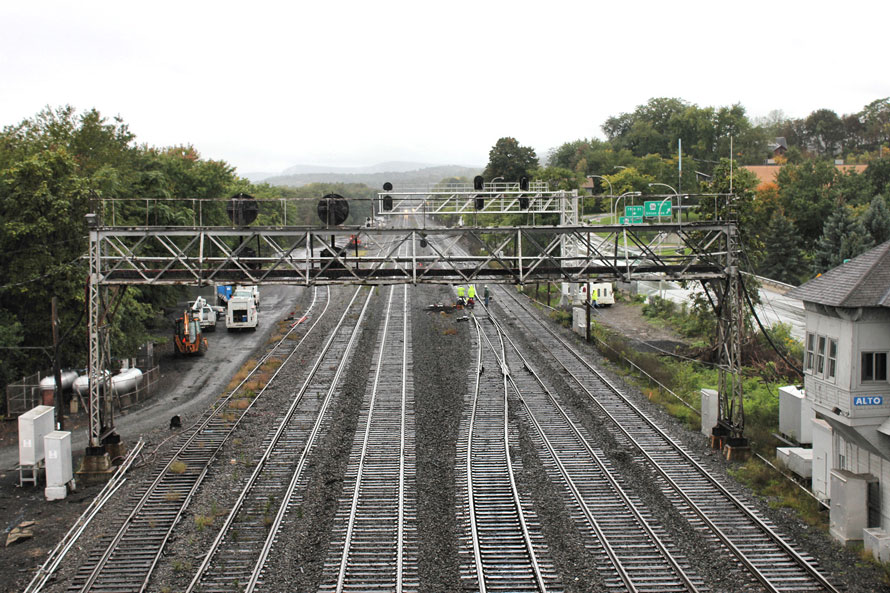
The PRR most likely upgraded the ALTO plant from semaphore signals to position light signals in the 1930’s along with the territory expansion, with the signal bridge having been part of the process. However, the design of the signal bridge, which uses less steel and more lattice, tends to imply an earlier vintage.
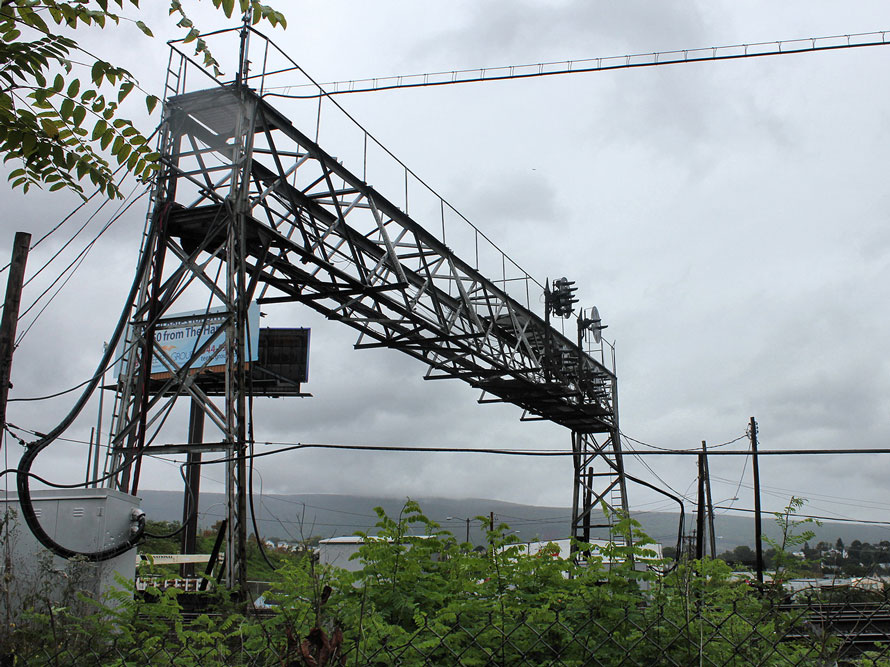
By mid-century the PRR had gone from being at the forefront of new technology to becoming somewhat conservative. In the realm of signaling this meant a continued faith in manned interlocking stations and Automatic Block Signaling as opposed to Centralized Traffic Control. So when traffic levels declined and operations in the Altoona terminal changed, SLOPE interlocking was drastically simplified and its tower closed, with control being transferred to a small unit lever panel inside ALTO in an updated process operationally similar to the way the other two complete interlocking machines had been transferred twenty years before.
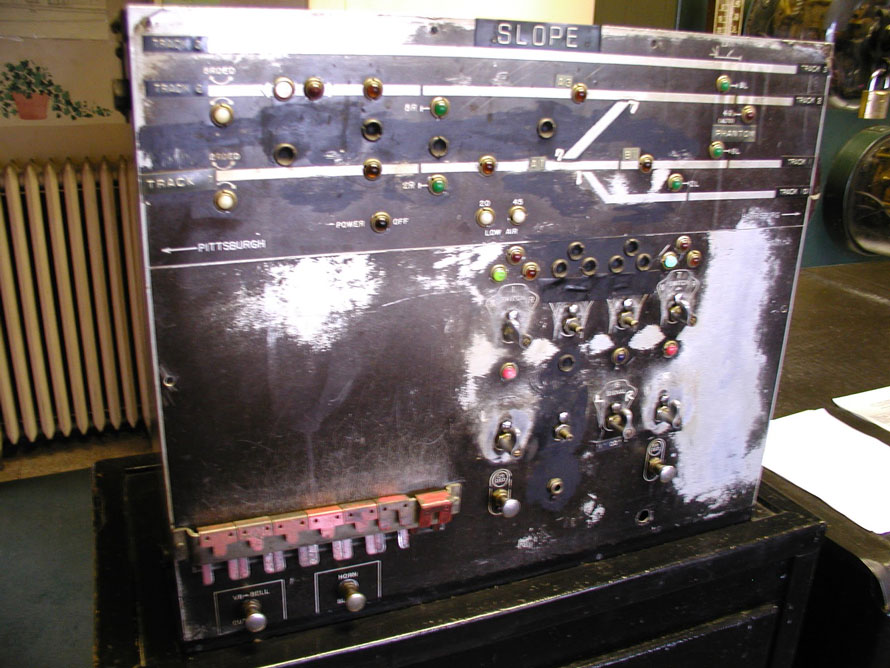
In 1968 the Pennsylvania Railroad merged with the New York Central to form the Penn Central Transportation Company. Falling into bankruptcy in 1970, the new railroad struggled to maintain operation and invest in its physical plant. However, in 1973-74 the Altoona terminal was the beneficiary of some of the PC’s limited capital budget. A number of towers were closed with their functions being transferred to a Union Switch and Signal panel inside ALTO tower. This gave the operator at ALTO effective control over the entire Altoona terminal.
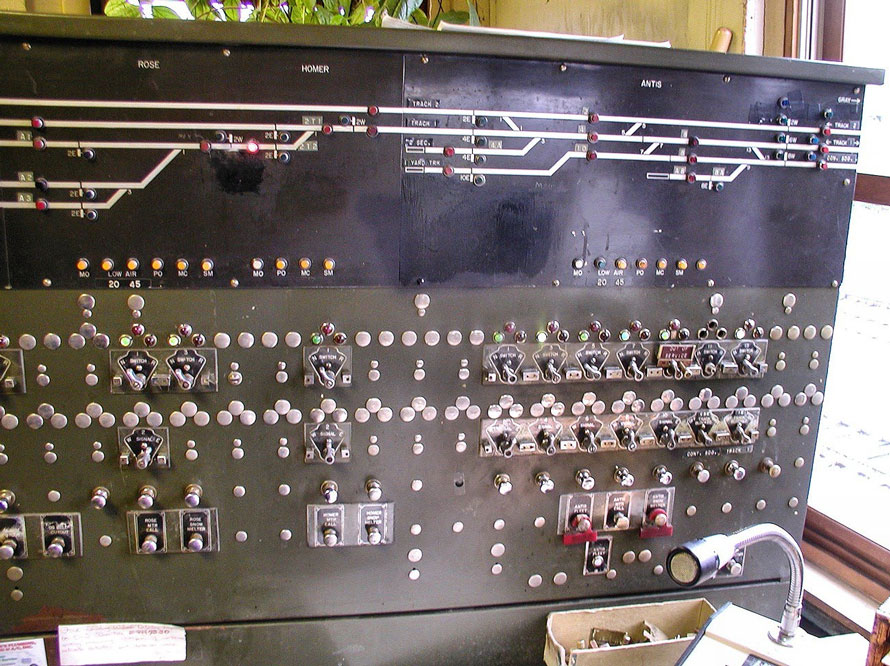
By the 1970’s steam power had long since vanished from the scene and passenger operations were also dwindling. Fewer trains needed to stop for helpers to be added and the slow speed interlocking plant had become a bottleneck. To relieve this problem and to reduce costs, ALTO was rationalized with unnecessary tracks and turnouts being removed, including the entire east end of the passenger station along with the twenty-seven lever 10th Street machine that controlled it. The interlocking was also converted to full speed operation with high signals replacing dwarfs on main tracks. To this end the Penn Central installed a new intermediate westbound signal bridge with three high position light signals bolted on top. Gone were the days of crafted steel lattice and by the 1970’s, plain steel beams were the name of the game.
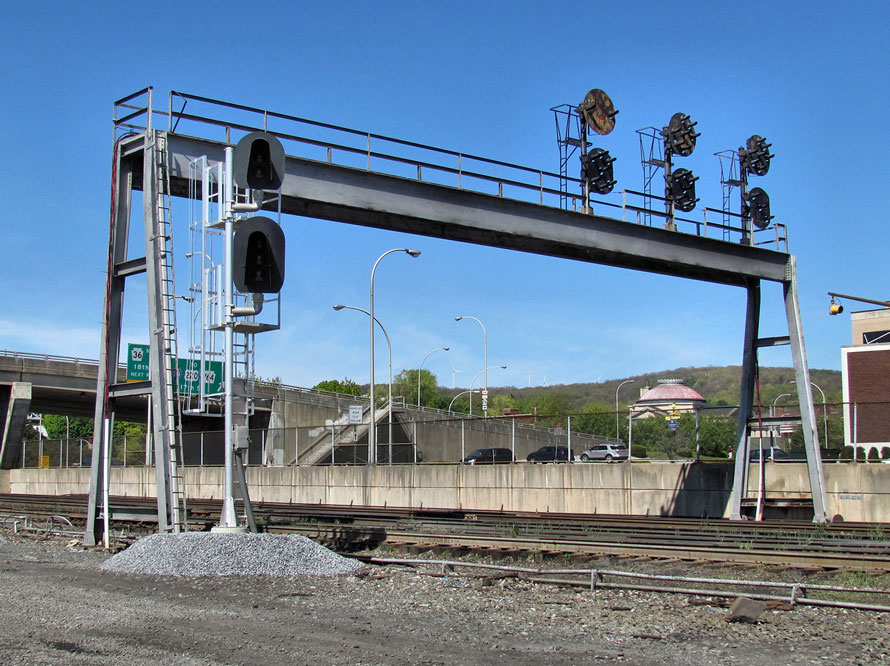
The rationalization resulted in a new model board made from plastics and other “modern” materials. Instead of hand painted labels, a consumer grade label maker stepped in to do the job. The Penn Central layout featured two bi-directional main tracks and two yard leads from the east and three main tracks (one bi-directional), a yard lead and a spur track from the west. Within ALTO interlocking two pocket tracks were created for helper sets to lay over while waiting to couple onto trains headed up the grade.
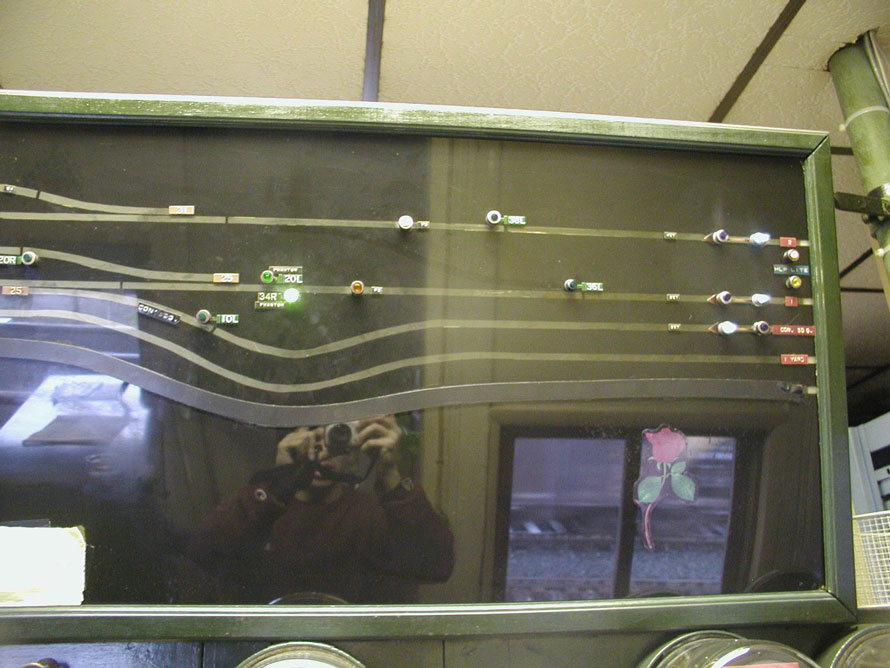
In place of the slow speed dwarf signals, high PRR position light masts with “red eyes” on the upper horizontal position and a full size backing plate on the lower head (both Penn Central innovations) appeared. These masts were installed on the newly bi-directional track 2 in the eastbound direction and on tracks 1, 2 and a yard lead in the westbound direction to allow for movements to proceed at track or thirty mph diverging speeds. Of course, to get those higher diverging speeds a number of the switches were upgraded from #10 points to #15.
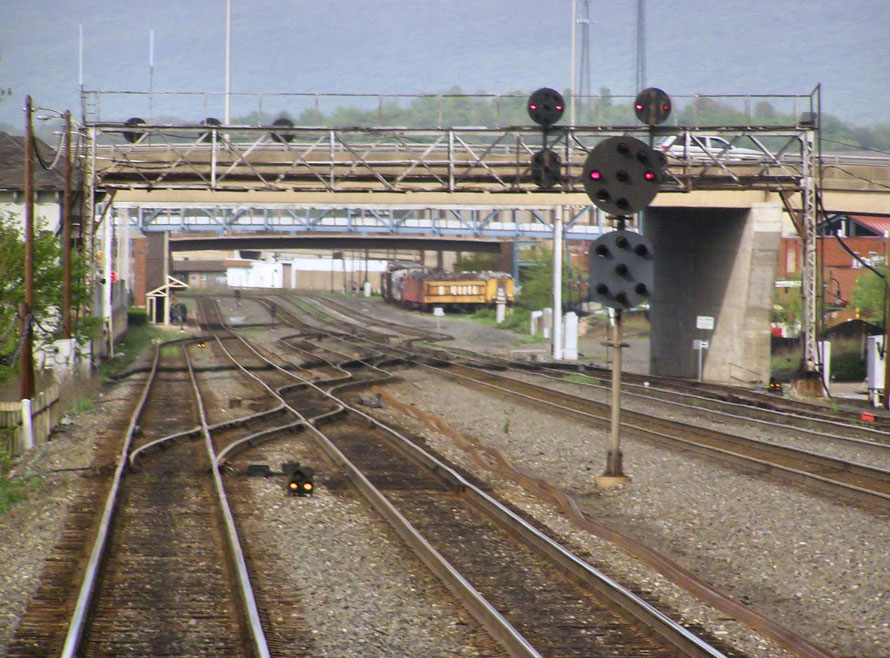
From the ashes of the Penn Central rose Conrail along with it billions of dollars in government funding. In the early years this meant bringing the existing physical plant to a state of good repair. Wooden structures need paint and along with the other PRR Main Line towers, ALTO needed a coat of paint. Still, there was a lot of old railroad spirit in the Conrail organization and as a result ALTO was painted with a gray and blue scheme, still visible in 2004.
. . . one day it found that its whole reason for existing had completely vanished, seemingly overnight.
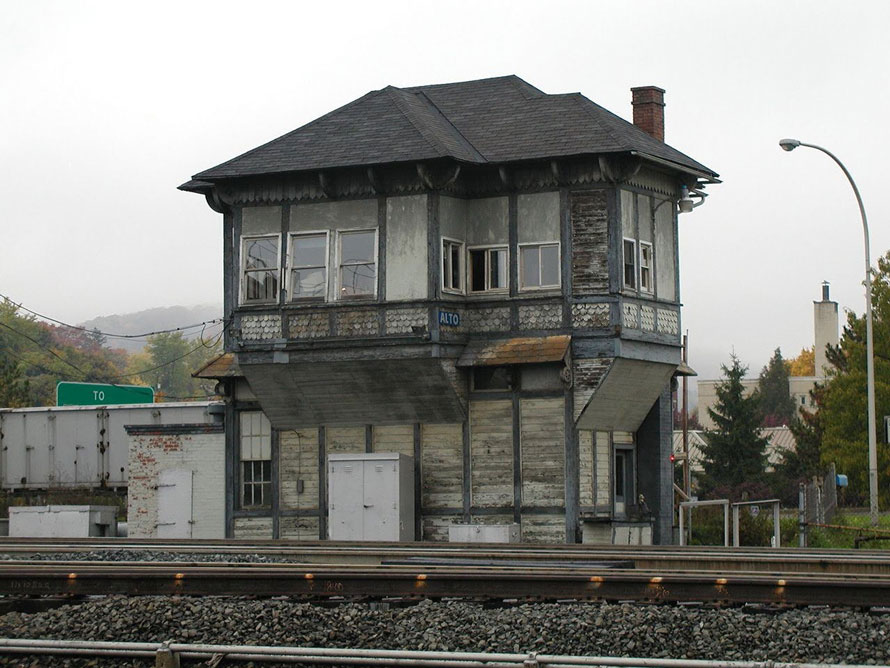
ALTO was also given a new nameplate made of reflective materials in Conrail white and blue.
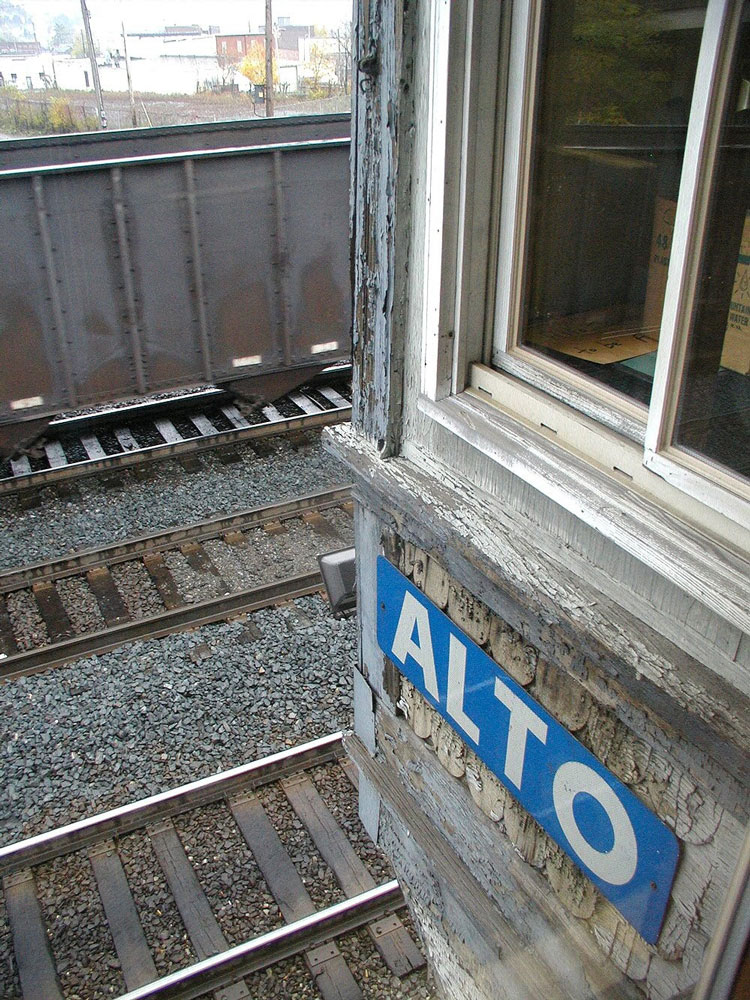
The aging double hung windows were boarded up and replaced with cheap, pre-manufactured windows one might buy in bulk at a hardware store. While Conrail could splurge on a bit of paint, trying to restore 1915 vintage windows was beyond the scope of the railroad’s signal department.
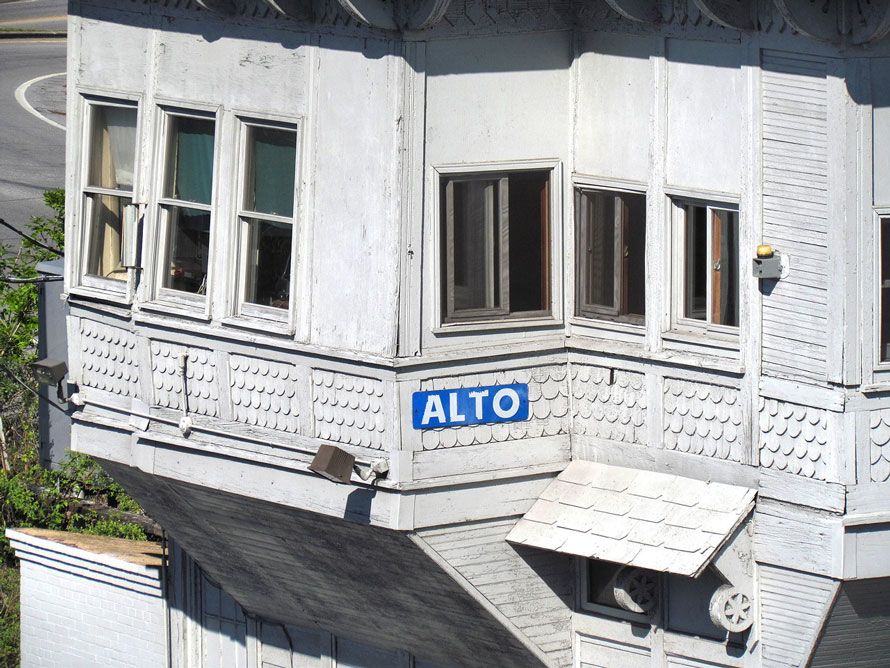
Conrail also brought us ALTO’s final configuration in conjunction with the Altoona Transportation Center project in the late 1980’s. The direct crossover from track 1 to track 2 westbound was removed so westbound trains on track 1 or out of the yard had to use the western ladder track. Westbound trains on track 2 could switch to track 3 east of the main interlocking or continue straight on track 2.
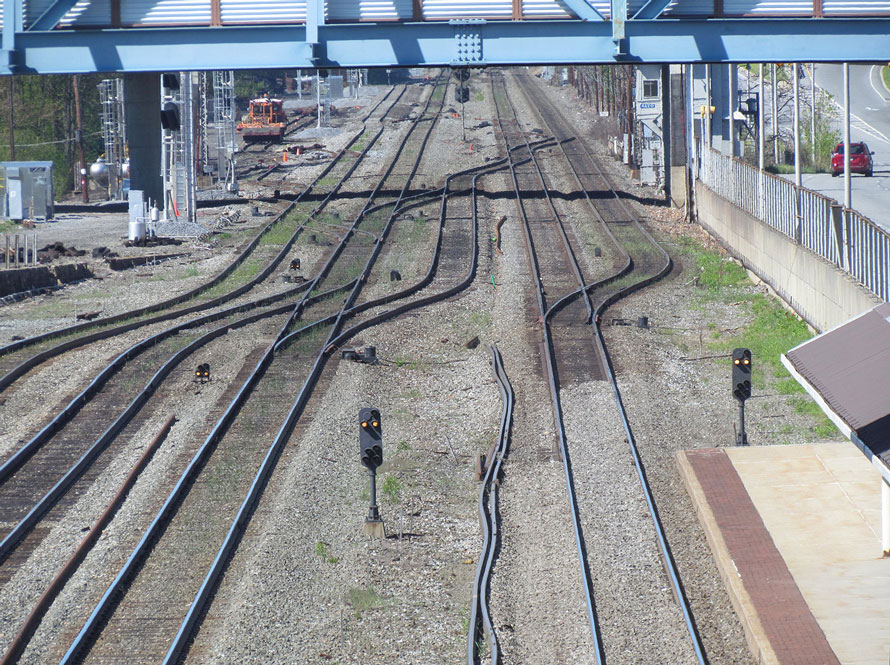
The Altoona Transportation Center project that extended the passenger platform not only forced the elimination of the 37 switch from track 1 to track 2, but also reduced the space available for signals causing the Penn Central era westbound masts to be replaced by two PRR pedestal type signals and a dwarf. Reduced use of helpers as diesel engines became more powerful prompted Conrail to operationally eliminate the track 3 pocket track by signaling through trains directly from track 2 to track 3 over the 31 switch, instead of running them past the tower to cross over via the 1 switch.
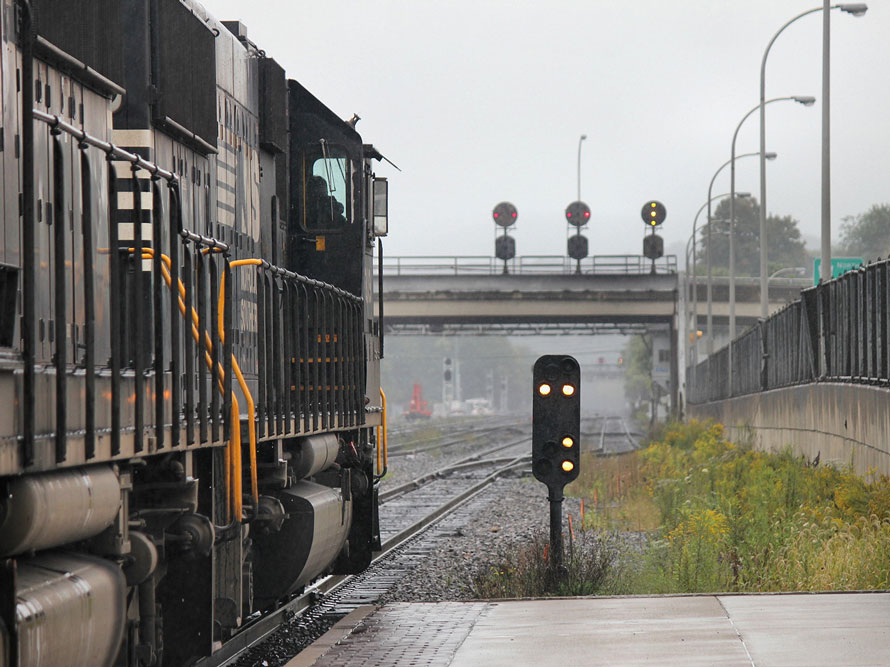
In 1999, Conrail’s Pennsylvania Railroad legacy, including the PRR Main Line and ALTO tower, was sold to Norfolk Southern. For a number of years nothing happened, but then around 2006 NS fixed the roof and applied a fresh coat of paint. The paint scheme was a uniform grey, but it showed that NS had no immediate plans to close or demolish the tower.
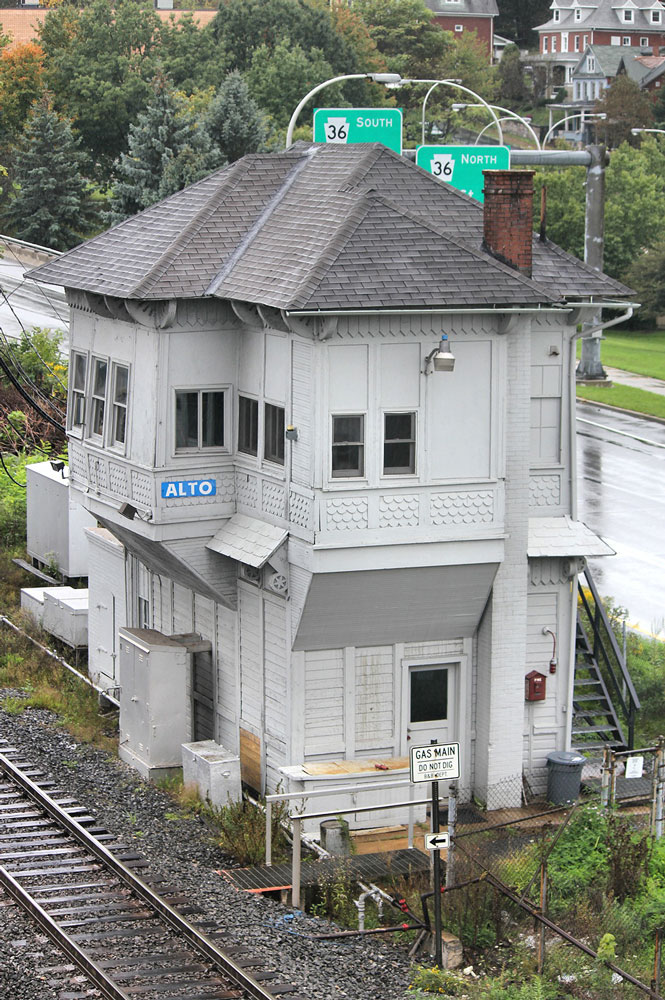
Of course “immediate” is a relative term. In 2011 a re-signaling project for the entire Altoona terminal was initiated and in 2012 it was completed with the tower closing after 97 years.
In the case of ALTO, the interlocking plant wasn’t simply re-built, it was completely removed, replaced by a plain Jane 3 track crossover named CP-ALTOONA that takes up the space once occupied by CP-SLOPE. Here we see the new three track westbound cantilever mast being installed in 2011. Unlike the 1915 signal bridge it is made from thick tubes of mass produced aluminum with only a fraction of the labor. Unlike its predecessors, the new hardware will not be changed through time, but simply replaced and re-purposed. In fact due to some signal changes in 2018 a new cantilever is already scheduled to replace the one installed just six years before.
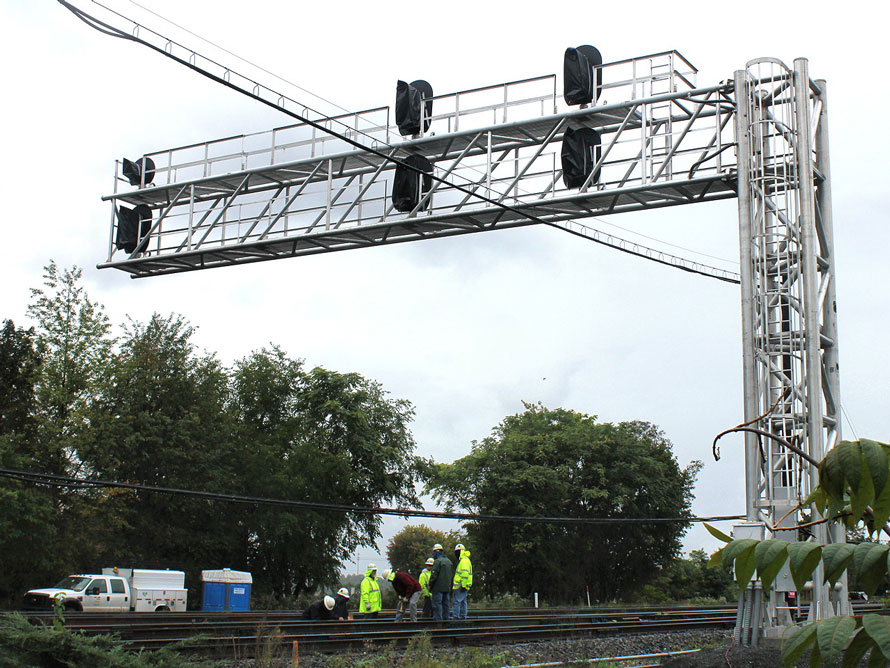
With Altoona Yard a shadow of its former self and freight trains becoming longer and heavier, it was no longer practical to stop long trains on the grade to attach helpers waiting at ALTO. In fact the helper pockets had been largely unused for years before the closure as through trains stopped elsewhere on the main line for helpers to tie on or cut off.
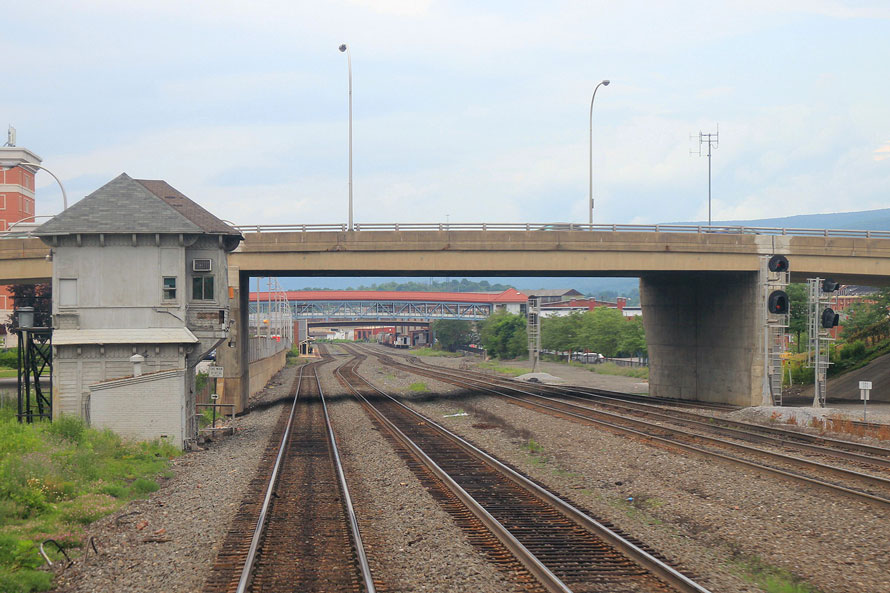
The story of ALTO tower and interlocking was one of continuous evolution, always changing with the times to remain relevant until one day it found that its whole reason for existing had completely vanished, seemingly overnight. It’s not just that manned towers have been replaced by remote offices. It’s that quirky interlocking plants hand drafted by some Victorian era railroad savant have been replaced by lots of straight lines laid out in CAD and cut into the earth by mechanized construction equipment. It’s a world where evolution is no longer necessary because it is more efficient to just start over from scratch.
Michael Brotzman – Photographs and text Copyright 2018
Simplify, simplify, simplify… that’s the story of modern railroading, isn’t it? Thanks for this history lesson on ALTO tower. It was fascinating to read.
Michael, impressive that you have documented the evolution of ALTO tower through the various railroad ownerships. The complex trackwork , and the towers that once existed in so many locations are fascinating, and fortunately some of them are preserved, such as Harris and SONO. The ornate details you identify are reminders of how railroad invested in artistic touches, not just the equipment. Thanks for the article.
Michael, This is an outstanding article and of great interest and I was wondering if you would be so kind to allow me to republish this article in the NMRA British Region magazine “Roundhouse” which is sent to over 500 members here in the United Kingdom.
A wonderful article showing all the history of Alto tower from the PRR days to the current NS system. So proud to have it in my home town!
An extremely worthwhile history of ALTO Tower. Thanks
A very impressive write-up! One minor correction…”When built in 1915, ALTO, nee-JR” should read “When built in 1915, ALTO, nee-JK”.